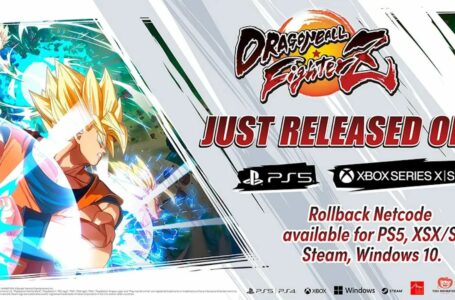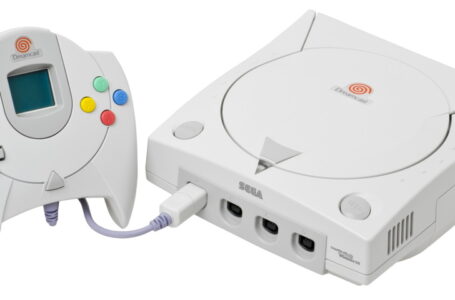Ten Rare Japanese Games You Can Play on Handheld Android Consoles
As of late Android based handheld consoles, such as the BLAZE TAB and JXD, are becoming increasingly popular as not only do they offer the functionality of a traditional tablet but they can also emulate games from all decades.
Of course as fans of Japanese Media we may not be interested in the retro gaming scene of Space Invaders and Pac-Man; however dig a bit further and you will find a wealth of Japanese exclusive games that can be increasingly difficult to find in your traditional shop.
With this being said I think it would be a good idea to take a look at some of the rarest Japanese anime related videogames that are easily accessible on android gaming consoles such as the BLAZE TAB and JXD.
Transformers: Convoy No Nazo (NES):
Released in 1986 onto the Nintendo Famicom Transformers: Convoy No Nazo, otherwise known as Transformers: Mystery of Convy, is a side-scrolling platformer that sees the player take control of Ultra Magnus in an attempt to destroy decepticon’s and find out what happened to Optimus Prime. The idea is that this game explains why Optimus Prime is missing from Season 3 of the TV Series; as Japan did not receive Transformers the Movie until after Season 3, known as Transformers 2010, had been aired.
While the game did explain why Optimus Prime was missing from the TV show it is extremely difficult; as one hit –or contact with a decepticon – will result in one life being lost; and even after fifteen minutes playing the game I could only get to the third opponent on the first mission. In total 10 missions were playable, with boss fights featuring iconic decepticon characters located at the end of each level. Hidden warp zones were also available in the game and can be accessed by rescuing bumblebee at certain points within the level.
Pocket Monsters Green (GameBoy):
When Pokemon, otherwise known in Japan as Pocket Monsters, made its debut in Japan on the Nintendo Gameboy in 1996 it came in the forms of Pokemon Red and Pokemon Green; each of which representing a starter Pokemon and featuring slightly different content. It’s always been an interesting fact that Pokemon Green ‘never’ officially saw a release outside of Japan – other than the GameBoy Advanced remake LeafGreen – and yet it can be accessed through Android based games tablets such as the BLAZE TAB and JXD.
There is no distinctive reason why Pokemon Green never made it outside of Japan but according to sources its because Nintendo opted to localise the newer Pokemon Blue title as opposed to the older Pokemon Green. I assume there were some other details which affected this decision, such as fears of the game not selling, but as you can imagine the games were relatively the same. The general concept though, of collecting all 150 (151) Pokemon, defeating gym leaders and beating the elite four all remains the same as the games we know and love today; the only difference being that it never received a western release – which is why it’s on this list.
Dragon Ball Z Super Saiya Densetsu (SNES):
Over the years there has been many Dragon Ball and Dragon Ball Z games released onto consoles, including those released onto the NES; but with Dragon Ball Z Super Saiya Densetsu things were slightly different. Dragon Ball Z Super Saiya Densetsu is, much like the Dragon Ball games on the NES, a role-playing-game that spans the Saiyan and Freiza sagas of the Dragon Ball Z timeline.
In the game players would be able to control numerous characters, such as Goku, Gohan and Piccolo, while travelling across a map to get to various story locations. Of course as this is an RPG title simply flying around the map would activate random battles with low-level warriors, such as Saibamen or Frieza henchmen. In terms of combat then players have the ability to choose from four different command options, such as Heavy Attack, Ki Blast, Block and Dodge, and are done in turn-based stages.
For a Dragon Ball Z game it’s quite in-depth and with the added performance of the SNES system it looks better than previous Dragon Ball games at the time. Since it’s release onto the Super Famicom in 1992 the game has received two sequels, each of which adapt different sagas of the Dragon Ball Z timeline, and in more recent years a GameBoy Advance spin-off styled sequel known as Legacy of Goku was released.
Sailor Moon (Mega-Drive):
The Sailor Moon game, otherwise known as Bishoujo Senshi Sailor Moon, is a SEGA Mega Drive (Genesis) game that allows fans of the show to take control of the five main sailor scouts in attempt to defeat the aliens plaguing the city. Released in 1994 the game is played out in the form of a side-scrolling beat-em-up that’s very similar to SEGA’s own Streets of Rage franchise; and in more ways than one.
As you would imagine each Sailor Scout is able to the punch, kick, block and use their special ability to attack their opponents and, just like in Streets of Rage, by using this special ability your own health will be depleted slightly.
Despite being based on the Sailor Moon franchise the opponent’s throughout are nothing like those seen in the TV or Manga series, with the exception of Queen Beryl, but yet somehow this doesn’t matter as the game plays really well and stays true to the concepts of the anime series; including 16-bit versions of the songs and ad-break texts seen in the original anime.
One Piece (GameBoy Colour):
Over the years Shonen Jump’s One Piece franchise has received many videogame instalments and in Japan the amount to choose from is insane. My chosen particular title, and one that can be played on android based gaming tablets such as the JXD and BLAZE TAB, is One Piece: Birth of Luffy’s Dream Pirate Crew!
Released in 2001, although it looks from the 1990’s, One Piece: Birth of Luffy’s Dream Pirate Crew is a turn-based-JPRG that follows the events of the One Piece manga and anime until the end of Arlong Story Arc.
As part of the game players would take control of Luffy and navigate him through numerous towns and aiding people when need; with random encounters against pirates during out of town environments. In regards to combat then players do battle through turn based gameplay whereby players would choose whether to attack or defend. It’s may seem relatively simplistic but it stays true to the One Piece storyline.
Mobile Suit Gundam EX Revue (Arcade):
Released in 1993, and then later re-released in 1994, Mobile Suit Gundam EX Revue is an arcade fighting game that sees characters, and mecha units, from the original 1979 Mobile Suit Gundam TV series fight against each other with Street Fighter gameplay mechanics.
In total nine different mobile suits, including the RX-77-2 Guncannon and MS-06S Zaku II, along with their pilots Kai Shiden and Char Aznarble, were some of the characters available for use. Unlike previous Gundam games this was a more ‘fast-paced’ fighting game and offered players to play with their favourite mechas without following a dedicated story. Mobile Suit Gundam EX Revue saw multiple sequels released over the years; as Mobile Suit Gundam Wing – Endless Duel, which was released onto the Super Famicom, uses the same gameplay systems but with mobile suits from the Gundam Wing franchise and in more recent years a PS1 variation, known as Mobile Suit Gundam Battle Assault, has been released.
Ghost in the Shell (PS1):
Everyone who likes anime has heard of Ghost in the Shell; it’s a sci-fi cyber-punk thriller film based upon the manga by Masamune Shirow and has since spawned many sequels and spin-off storylines including the recently released prequel series Ghost in the Shell: Arise. What you may not know however is that a videogame based upon the series was developed and released onto the original Playstation by EXACT and Production I.G.
The game sees Section 9, lead by Major Mokoto Kusanagi, attempt to stop the terrorist threat known as the Human Liberation Front; a task which is done across several missions and different environments. Unlike the later games, such as Stand Alone Complex on the PSP and PS2, Ghost in the Shell saw players taking control of the Fuchikoma and battling other mecha-styled-tanks in the area.
The biggest surprise however was that the game featured animated cut-scenes, all of which had been exclusively designed for the game, and that when the game was localised for it’s English release it used the same set of voice actors as the original Ghost in the Shell movie. Ghost in the Shell is one of the few games on this list which made it to the UK; but it can be quite difficult to find.
Neon Genesis Evangelion (N64)
Everyone knows of the anime Neon Genesis Evangelion and if they haven’t they are probably aware of the fiasco with the English Dub release of Evangelion 3.33; well before all of that came the self titled Nintendo 64 game Neon Genesis Evangelion. Over the years there has been a handful of Evangelion games but this Nintendo 64 version is one that stands out the most for me.
Neon Genesis Evangelion on the Nintnedo 64 takes inspiration from the main fights seen in the TV Anime and the End of Evangelion movie and splits them into thirteen fights; with the most notable fights being with the Angels. Each fight is played out as a 2.5D fighter – similar to Super Street Fighter IV on the 3DS, and each character is able to attack, block or use the shield while button combinations can also result in more ‘unique’ attacks being dealt. What I find most interesting about this Nintendo 64 game is that in-between fight is 3D sequences that replicate those experienced within the tv series or film itself. To me this is the only stand out Evangelion game and its easily one of the more enjoyable games to play – even if you do not understand Japanese text.
Bleach Advance (Game Boy Advance):

Despite being a relatively popular, and long-running, franchise Bleach has only received a handful of games within the western market and yet in Japan the franchise has received a constant stream of games from the GameBoy upwards to the PS3. This Gameboy Advance version, known as Bleach Advance: Kurenai ni Somaru Soul Society, is a 2D sprite based fighting game that allows players to battle against their numerous soul reapers and hallows.
Ironically though Bleach Advance isn’t your traditional fighting game; as unlike other fighting games, such as Street Fighter or King of Fighters, Bleach Advance is a turned based game where players choose which command (such as Attack or Defend) in order to defeat their opponent. It’s a relatively puzzling gameplay style; but it is different and it works quite well. In terms of story then Bleach Advance follows the events of the second and third major story arcs of the series.
Berserk: Gut’s Rage (Dreamcast)
:
Released in 1999 for the SEGA Dreamcast Berserk: Gut’s Rage is a 3D Hack-and-slash action adventure game that takes place ‘after’ the original Berserk TV Anime and acts as its unofficial sequel. In the game players take control of a recently healed Gut’s and attempt to extract revenge on the demonic creatures that inflicted damage to him and his friends. The game takes inspiration from the ‘early episodes’ of the anime and sees him take down each of the main commanders of the world.
Despite being ‘openly’ released across the globe the game never achieved success within the anime community; not because it was bad, as its actually a decent game, but because of its poor advertising and lack of connectivity to the anime and manga itself. Fortunately though this game is now easily accessible, and playable, through the use of android gaming tablets and for once we can see the ‘continuation’ of the Berserk storyline unfold.
Summary:
With the arrival of Android based gaming consoles, such as the BLAZE TAB, GPD XD and JXD, gaining access to Japanese anime titles such as those listed above has never been easier; and while i’ve listed some of the rarest, and my favourite, Japanese games available on the devices there is still plenty more to explore. The BLAZE TAB, GPD XD and JXD are all currently available to purchase at Rice Digital and Funstock Retro with each tablet coming with FREE UK Delivery.
- Dragon Ball Xenoverse 2 E3 Gameplay Trailer Reveals New Characters - June 16, 2016
- AOT: Wings of Freedom E3 Gameplay Trailer Released - June 16, 2016
- The King of Fighters XIV European Release Date Announced - May 19, 2016











